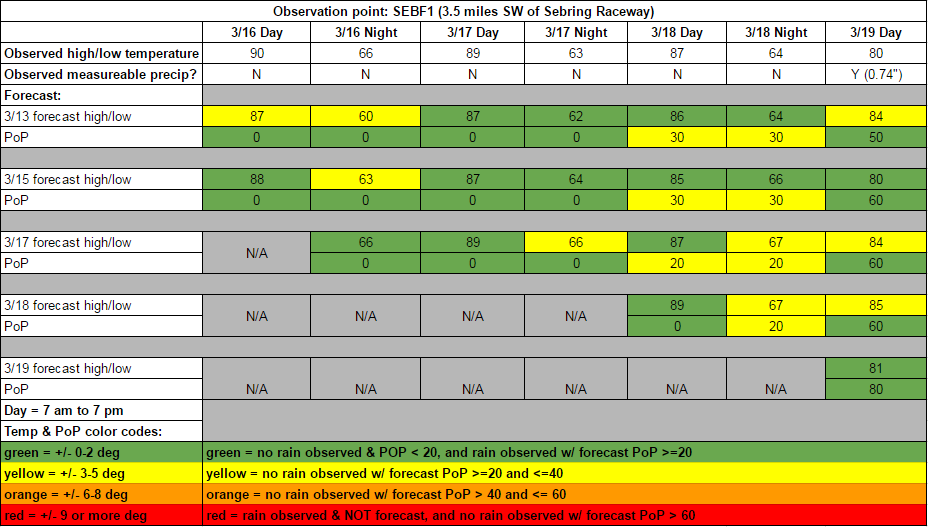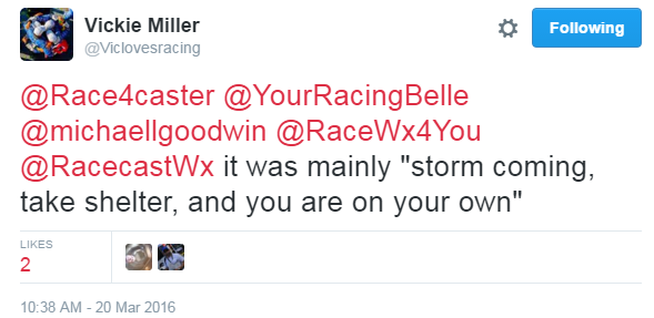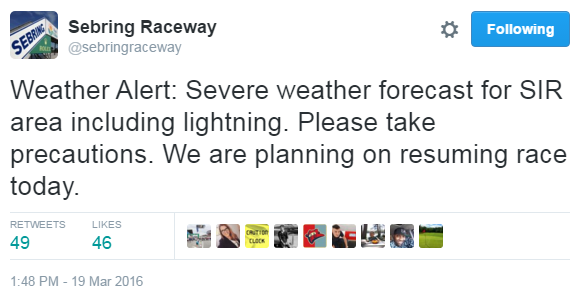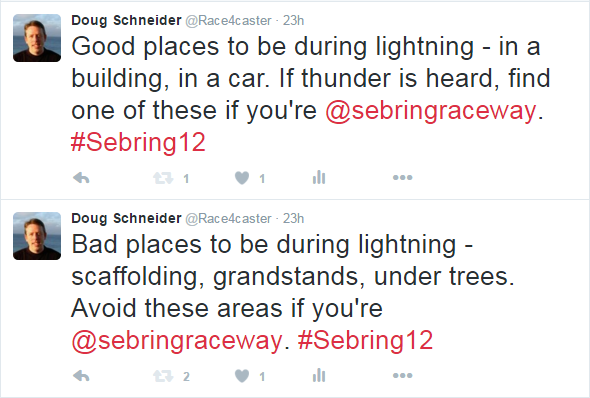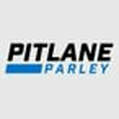The Storm Prediction Center issued a Severe Thunderstorm Watch near Sebring at 1:15 pm, mentioning a potential threat of damaging wind gusts and large hail. While the highest gust I saw at nearby observation sites was around 20 mph, there was some wind damage east of Lake Okeechobee, and even a tornado near Fort Lauderdale. Thankfully, it sounds like everyone at the track was safe and there was no significant damage.
I applaud IMSA for doing their part in keeping the drivers, teams, and track marshals safe from the hazardous weather. They red flagged the race before the frequent lightning arrived at the track. The TV crews were brought down from their scaffolding as soon as lightning was observed nearby. However, it sounds like safety efforts for the fans were lacking in some respects.
I asked some fans who were at the race how they were informed of the approaching weather and the need to take shelter. I received mixed responses. Katie Mech said she was only notified by a text message from a friend. Michael Goodwin said he was notified through the Radio Le Mans broadcast, but not through the PA system. Charley Robertson was notified by the Corvette Car Corral. The fans who replied to me via Facebook mentioned that they were well informed of the situation by PA announcements and the radio broadcast. Others were notified by police officers of the approaching storms (see comment on this post). So it seems that some fans got a message from the track officials, but others did not. Vickie Miller told me that the PA speakers at the track are few and far between, and often cannot be heard when cars are on track. Both Katie and Vickie said that there were no messages on the video screens to alert fans to seek shelter - only a weather map was displayed. And police officers can't reach every person. So whether the message was heard probably depended on where fans were located and whether they were listening to the radio broadcast at the time. Vickie summed up the PA message that she heard this way:
From the information I've gathered, the track could have done a better job of communicating the threat to the fans and keeping them informed. There's no excuse for the lack of a message on video screens. A video message is important as the PA system often can't be heard over the sound of the cars. In addition, social media could have been used more effectively. In my interview with other tracks about their hazardous weather policies, I learned that social media is an important channel for tracks to get messages out to fans. There were many tweets from myself, Scott, and from others about the approaching weather well in advance, several of which tagged the track, but the track's official Twitter account was silent until this tweet. Sending out one tweet an hour after the threat first become imminent is not enough. Vickie told me that she used Twitter frequently at Sebring to get weather information, and she found it very helpful to know where the rain was located. There wasn't much effort from Sebring Raceway to keep fans informed and help direct fans to safety. There aren't many places at Sebring to find shelter, but at a minimum, they could have retweeted me:

